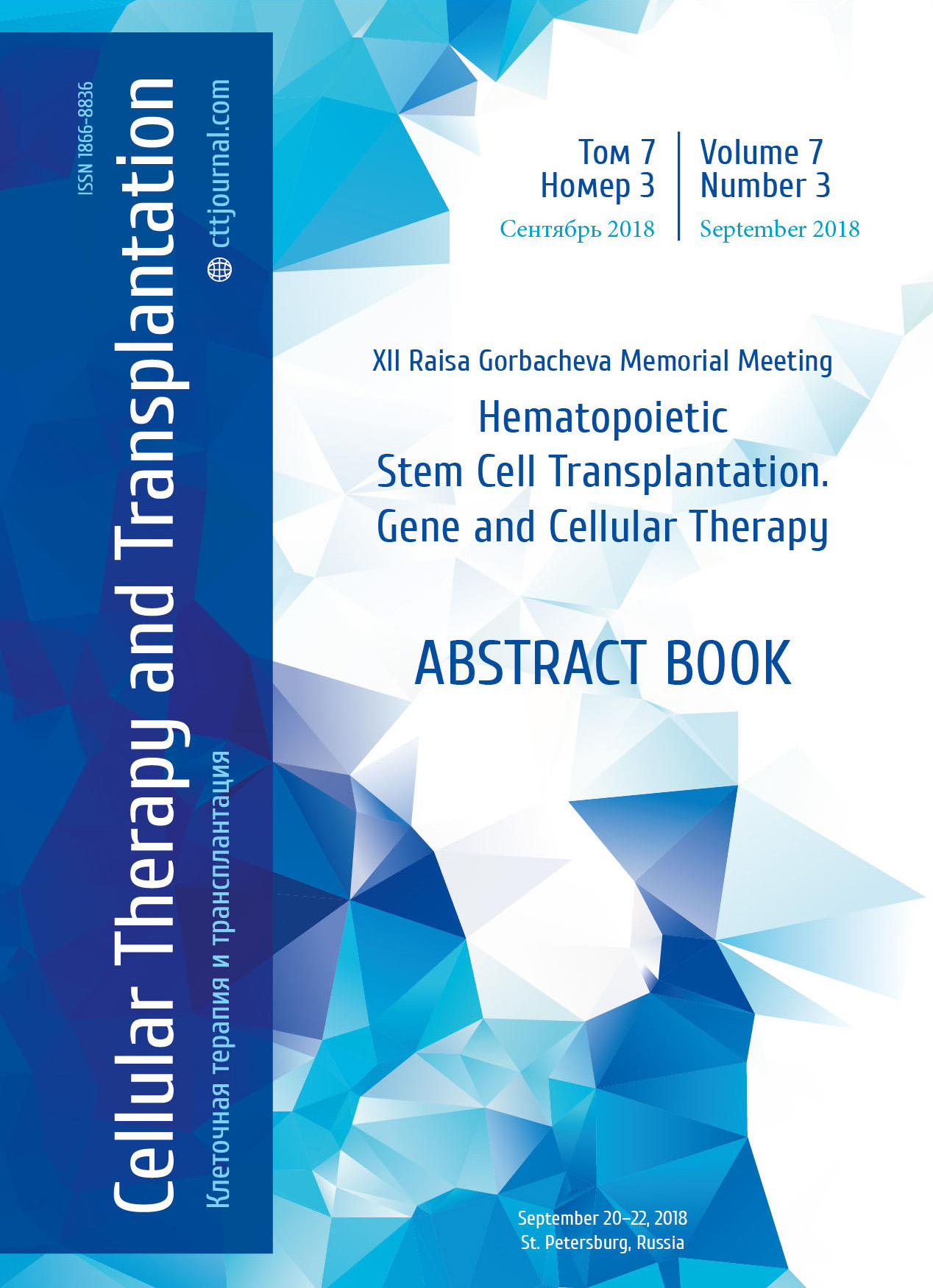A pilot study of ruxolitinib combined with cyclophosphamide for graft-versus-host disease prophylaxis and relapse prevention in patients with myelofibrosis: a prospective study
Summary
Introduction
Allogeneic stem cell transplantation (allo-HSCT) is currently the only treatment modality with curative potential in patients with myelofibrosis (MF), although transplant-associated complications and relapses significantly reduce the application of this method. JAK1/JAK2 inhibitor ruxolitinib is effective in reducing symptomatic splenomegaly and myelofibrosis-related symptoms. At the same time it has significant immunomodulatory effect, and is used for the treatment of steroid-refractory acute and chronic graft-versus-host disease (GVHD). This study evaluated calcineurin inhibitor-free GVHD prophylaxis regimen with ruxolitinib in combination with posttransplant cyclophosphamide (PTCy).
Patients and methods
Twenty patients at a median age of 51 (32-61) years were enrolled in the study. Two patients were diagnosed with post-essential thrombocythemia myelofibrosis, 4, with postpolycythemia vera myelofibrosis; 14, with primary myelofibrosis. By the DIPSSplus scale, 11 patients had intermediate-2, 8 patients had high-risk disease and 1 patient was transplanted in blast crisis. Fifteen patients were positive for JAK2V617F; 3 were CALR-positive; and 2 were MPL-positive before alloHSCT. All patients were treated with JAK1/2 inhibitors before alloHSCT, with median treatment duration of 6 months (3-22) at a dose of 30-45 mg. The disease stabilization occurred in 11 patients; clinical improvement, in 8, and the disease progression was observed in 1 case. Splenectomy was performed in 7 patients, due to poor spleen response. Reduced-intensity conditioning (fludarabine 180 mg/m2 plus busulfan 8-10 mg/kg) followed by allo-HSCT performed from full-matched related (n=3) or unrelated donor (n=10), and mismatched HSCT (HLA 9/10) from unrelated (n=2) or haploidentical donor (n=5). Graft-versus-host disease (GVHD) prophylaxis consisted of posttransplant cyclophosphamide 100 mg/kg at day +3, +4 and ruxolitinib 5-7.5 mg bid from day+5 to day +50 (n=2), and day +100 (n=18). G-CSF-mobilized peripheral blood progenitor cells (n=19) and bone marrow (n=1) were used as stem cell sources. Median number of CD34+cells/kg was 6.7x106 (1.4-12.0). The trial is registered on clinicaltrials.gov, NCT02806375.
Results
Median follow-up time was 18 (6.6–36.1) months. Primary engraftment was documented in 18 patients. Median time to leukocyte engraftment was 32 days (18-61), to platelet engraftment, 38 days (15-219). One patient received second transplantation from the same donor due to primary graft failure. He died in cytopenia accomplished by sepsis. Severe poor graft function was documented in 11 patients. In 7 of these cases, it resolved spontaneously with a median duration of 79 days (16-470). Three patients recovered after CD34+ boost administration. Dose reduction of ruxolitinib to 10 mg/day due to poor graft function was performed in 8 patients. Three out of four deaths occurred before engraftment: one patient was lost due to Pseudomonas aeruginosa sepsis, one death was associated with gastrointestinal bleeding, and one patient deceased due to primary graft failure and sepsis. One patient died due to thrombotic microangiopathy and sepsis on D+115. Twenty-nine percent of patients developed acute GVHD (grade 2-4), 18%, aGVHD grade 3-4. In all cases except of one, aGVHD grade 3-4 was successfully treated with calcineurin inhibitors. One patient required systemic steroid therapy. Moderate chronic GVHD (NIH) was documented in 29% of patients. The regimen was well tolerated. Grade 3-4 toxicities included only toxic hepatitis in 4 and sepsis in 5 patients. Mild veno-occlusive disease was observed in one patient, TMA, in one case. Viral reactivation was documented in 47% of patients, CMV (n=6), EBV (n=1), HHV type 1,2 (n=1), HHV type 6 (n=2), BK virus (n=1). Moderate hemorrhagic cystitis developed in 2 patients. Non-relapse mortality on D+100 was 15% and 20%, at 1 year. The two-year overall survival was 80%. All the patients achieved hematological, molecular remission and full donor chimerism. Near-complete resolution of bone marrow fibrosis was documented in 12 patients. No molecular or hematological relapses were registered.
Conclusion
AlloHSCT is an effective treatment modality for myelofibrosis. GVHD prophylaxis using a combination of PTCy and ruxolitinib is associated with good acute and chronic GVHD control, and it seems to be a promising modality, at least for MF patients.
Keywords
Myelofibrosis, allogeneic hematopoietic stem cell transplantation, ruxolitinib, graft-versus-host disease, prophylaxis, cyclophosphamide.


